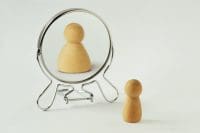We humans have always known there’s more to communication than the words we say. There are context, emphasis, tone, body language, and more. This article is about the “more.” Verbal communication involves at least two people. And it’s not effective (doesn’t bring the intended results) unless both parties are on the same wavelength. The problem for the speaker is how to get the listener on the same wavelength.
According to Bolman and Deal, this can be accomplished by giving the listener four gifts:
- Love, by extending caring and compassion
- Power, by allowing independent thought
- Ownership, by enabling identification with the ideas
- Significance, by creating a sense of shared destiny
Past paradigms dealt with people as information receivers, which militates against a sense of ownership and power. In contrast, the quantum paradigm strives to improve how people relate to one another by emphasizing inclusiveness. Moreover, in the past, listeners rarely were acknowledged or rewarded.
The quantum paradigm is holistic in that it addresses intellect, values, and spirit. The old paradigm was
not inspiring because it focused almost exclusively on problems and their solutions rather than strengths and improvement.
Research indicates that human beings are hardwired to focus on what’s wrong or missing, and speakers have tended to focus on what’s dysfunctional or “broken.” With a quantum orientation, communication sensitizes listeners to “strange attractors”—a nebulous set of dispersed experiences, factors, and forces that provides an imperative to change. Quantum communicators draw attention to those factors, then encourage and assist listeners to co-create ways of addressing them.
What has all this to do with nursing? Just about everything! Nurses constantly communicate. In quantum nursing, communication is accomplished and enhanced by the nurse focusing her or his attention on the person of the patient or client. Until recently, little was known about the neural mechanisms underlying the transfer of information from one person’s brain to another’s. Now we’re learning something about the why; the psychology of communication is moving from “soft” to “hard” science. Stephens, Silbert, and Hasson compared images of speakers’ and listeners’ spatiotemporal brain activity, and found that they are temporally coupled in effective communication. “This coupling vanishes when participants fail to communicate,” they wrote. “Moreover, though on average the listener’s brain activity mirrors the speaker’s activity with a delay, we also find areas that exhibit predictive anticipatory responses. We connected the extent of neural coupling to a quantitative measure of story comprehension and find that the greater the anticipatory speaker–listener coupling, the greater the understanding.”
So, effective patient education, teaching, and support extend far beyond providing information, no matter how precise, personalized, and documented it may be. It demands that the professional (in this case, the nurse) consciously “connect” with the patient, which we now know involves neural coupling. The greater the coupling, the greater the understanding, and the greater the patient’s understanding. Neural coupling puts people literally on the same wavelength: quantum communication!
Leah Curtin, RN, ScD(h), FAAN
Executive Editor, Professional Outreach
American Nurse Today
Selected references
Bolman LG, Deal TE. Reframing Organizations: Artistry, Choice, and Leadership. San Francisco, CA: Jossey-Bass; 2003.
Curtin L. Quantum nursing. Am Nurs Today. 2010;5(9):47-48.
Curtin L. Quantum nursing II: Our “field” of influence. Am Nurs Today. 2011;6(1):56.
Moxley R. Leadership and Spirit: Breathing New Vitality and Energy into Individuals and Organizations. San Francisco, CA: Jossey-Bass; 2000.
Stephens GJ, Silbert LJ, Hasson U. Speaker-listener neural coupling underlies successful communication. Proc Natl Acad Sci U S A (PNAS). 2010;107(32):14425-14430.
Dr. Leah Curtin, RN, ScD (h), FAAN, is Executive Editor, Professional Outreach, American Nurse Today. An internationally recognized nurse leader, ethicist, speaker, and consultant, she is a strong advocate for both the nursing profession and high-quality patient care. Currently she is Clinical Professor of Nursing at the University of Cincinnati College of Nursing and Health. For over 20 years, she was the Editor-in-Chief of Nursing Management. In 2007, she was appointed to the Standards and Appeals Board of DNV Healthcare, a new Medicare accrediting authority. Dr. Curtin can be reached at LCurtin@healthcommedia.com.

















